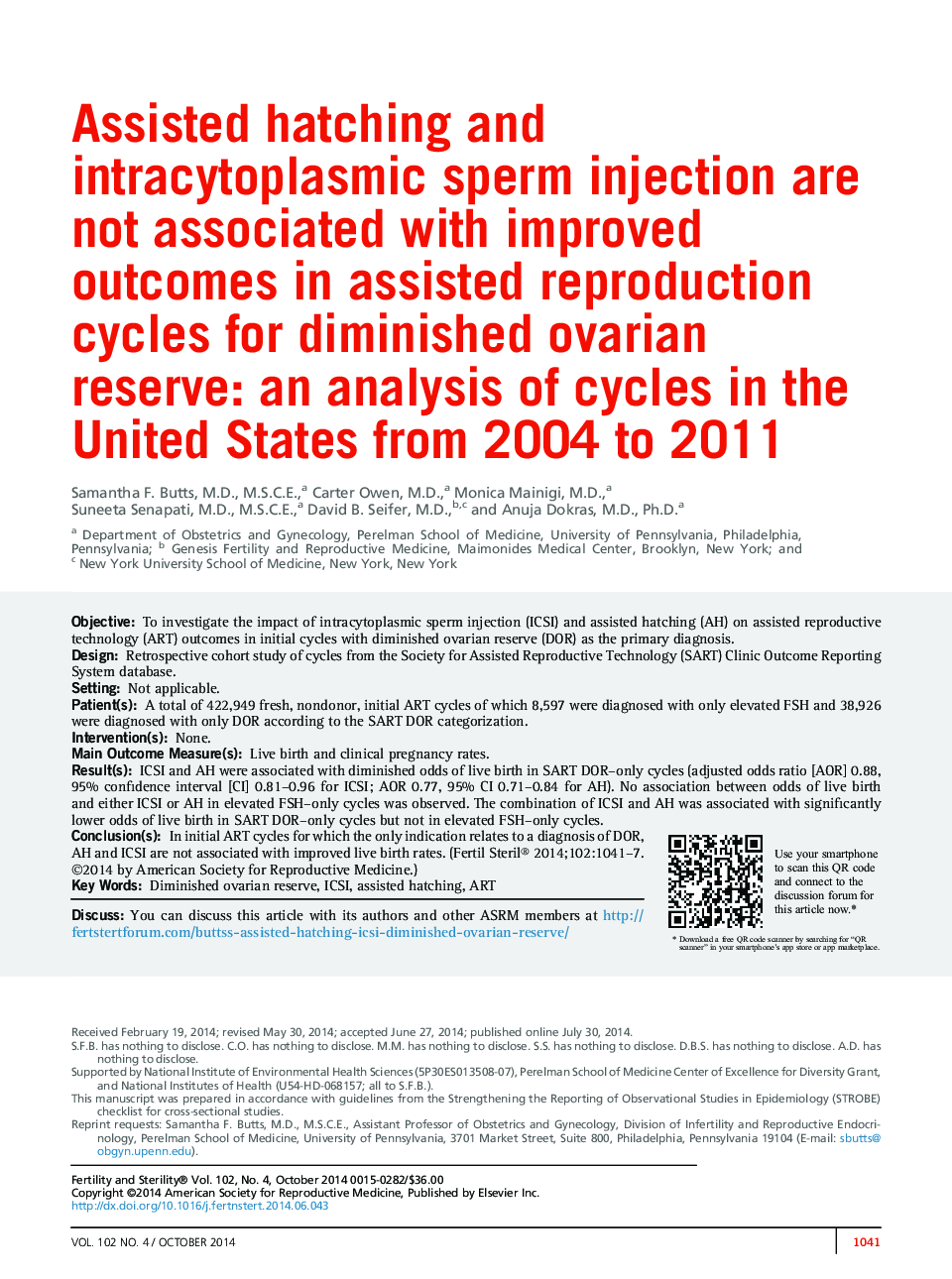| Article ID | Journal | Published Year | Pages | File Type |
|---|---|---|---|---|
| 6181462 | Fertility and Sterility | 2014 | 8 Pages |
ObjectiveTo investigate the impact of intracytoplasmic sperm injection (ICSI) and assisted hatching (AH) on assisted reproductive technology (ART) outcomes in initial cycles with diminished ovarian reserve (DOR) as the primary diagnosis.DesignRetrospective cohort study of cycles from the Society for Assisted Reproductive Technology (SART) Clinic Outcome Reporting System database.SettingNot applicable.Patient(s)A total of 422,949 fresh, nondonor, initial ART cycles of which 8,597 were diagnosed with only elevated FSH and 38,926 were diagnosed with only DOR according to the SART DOR categorization.Intervention(s)None.Main Outcome Measure(s)Live birth and clinical pregnancy rates.Result(s)ICSI and AH were associated with diminished odds of live birth in SART DOR-only cycles (adjusted odds ratio [AOR] 0.88, 95% confidence interval [CI] 0.81-0.96 for ICSI; AOR 0.77, 95% CI 0.71-0.84 for AH). No association between odds of live birth and either ICSI or AH in elevated FSH-only cycles was observed. The combination of ICSI and AH was associated with significantly lower odds of live birth in SART DOR-only cycles but not in elevated FSH-only cycles.Conclusion(s)In initial ART cycles for which the only indication relates to a diagnosis of DOR, AH and ICSI are not associated with improved live birth rates.
